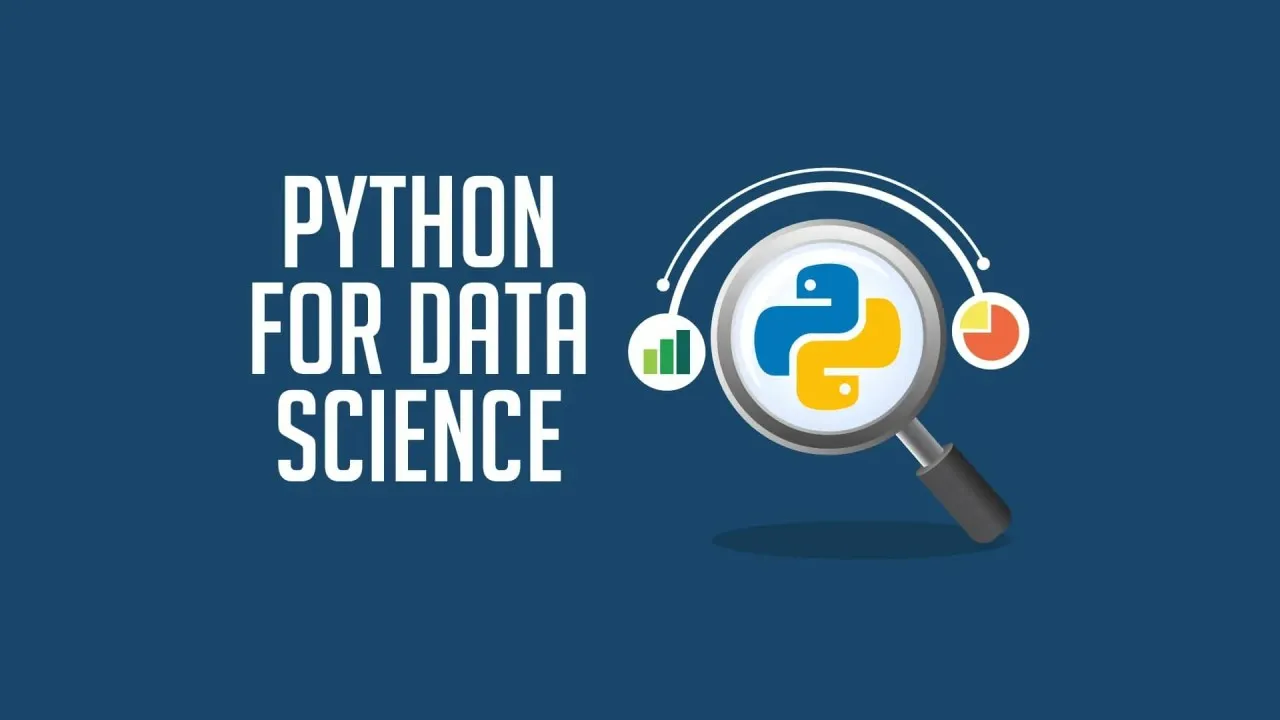Step 1: Learn Python Basics For Data Science
- Install Python: Go to the official Python website, download the latest version of Python, and follow the installation instructions for your operating system.
- Variables and Data Types: Understand how to declare variables, perform basic arithmetic operations, and work with data types such as integers, floats, strings, lists, tuples, and dictionaries.
- Control Structures: Learn about loops (for loops, while loops) for iterating over data and conditional statements (if, elif, else) for making decisions in your code.
- Functions: Define functions using the def keyword, understand function parameters and return values, and practice writing reusable code blocks.
- Modules and Packages: Explore built-in modules like math, random, and datetime. Use pip to install external packages such as NumPy, Pandas, Matplotlib, and Seaborn for data science tasks.
Step 2: Data Manipulation and Analysis
- NumPy: Dive into NumPy arrays for efficient numerical computations, array operations, indexing, slicing, and reshaping arrays.
- Pandas: Master Pandas DataFrame and Series objects for data manipulation tasks like filtering data, handling missing values, merging datasets, and performing groupby operations.
- Data Cleaning: Practice techniques such as handling missing data (NaN values), removing duplicates, and converting data types to prepare data for analysis.
- Data Visualization: Use Matplotlib for basic plotting (line plots, bar plots, scatter plots) and Seaborn for more advanced statistical visualizations (box plots, violin plots, pair plots) to gain insights from data.
Step 3: Statistics and Probability For Data Science
- Basic Statistics: Learn about mean, median, mode, variance, standard deviation, correlation, and covariance to summarize and analyze data distributions.
- Probability Distributions: Understand common probability distributions such as normal, binomial, Poisson, and their applications in data analysis and modeling.
- Statistical Testing: Explore hypothesis testing (t-tests, chi-square tests), ANOVA for variance analysis, and regression analysis (linear regression, logistic regression) for predictive modeling.
Step 4: Machine Learning Basics
- Scikit-Learn: Implement supervised learning algorithms (regression, classification) using Scikit-Learn, and explore unsupervised learning techniques such as clustering (K-means clustering, hierarchical clustering) and dimensionality reduction (Principal Component Analysis – PCA).
- Model Evaluation: Understand evaluation metrics like accuracy, precision, recall, F1-score, ROC-AUC, and confusion matrices for assessing model performance.
- Cross-Validation: Learn about k-fold cross-validation, train-test splits, and hyperparameter tuning techniques (grid search, random search) to optimize model performance.
Step 5: Advanced Topics for Data Science
- Deep Learning: Explore neural networks using libraries like TensorFlow or PyTorch for building deep learning models (feedforward networks, convolutional neural networks – CNNs, recurrent neural networks – RNNs) for tasks like image classification, natural language processing (NLP), and time series forecasting.
- Big Data Processing: Learn about distributed computing frameworks like Apache Spark for processing large-scale datasets, performing data transformations, and running machine learning algorithms in parallel.
- Data Engineering: Understand data pipelines using tools like Apache Airflow, ETL processes (Extract, Transform, Load), data warehousing concepts (star schema, snowflake schema), and database management systems (SQL, NoSQL).
Step 6: Real-World Projects and Practice
- Kaggle Competitions: Participate in Kaggle competitions to apply your data science skills to real-world problems, work with diverse datasets, and learn from the Kaggle community through discussions and shared solutions.
- Capstone Projects: Work on end-to-end data science projects, starting from data collection and cleaning, exploratory data analysis (EDA), feature engineering, model building, evaluation, and deployment (if applicable) to showcase your skills and build a portfolio.
- Open-Source Contributions: Contribute to open-source data science projects on platforms like GitHub, collaborate with other developers and data scientists, and gain real-world experience working on shared codebases.
Step 7: Continuous Learning and Networking
- Stay Updated: Follow blogs, online courses, and forums to stay updated with the latest tools, libraries, algorithms, and best practices in data science and machine learning.
- Networking: Join data science communities on platforms like LinkedIn, Twitter, Reddit, and attend local meetups, workshops, and conferences to network with professionals, share knowledge, and explore career opportunities.
- Advanced Topics: Explore specialized topics such as natural language processing (NLP), computer vision, reinforcement learning, time series analysis, anomaly detection, and recommendation systems based on your interests and career goals.
This detailed roadmap will guide you through mastering Python for data science and machine learning, from foundational concepts to advanced topics and real-world applications. Happy learning!
Also Read : Stock Sentiment Analysis with machine learning and python
